5 ways to effectively reduce the size of PowerPoint files
Today we know Microsoft as the world's leading software giant, with a market cap of $ 1 trillion and a long history of dominance.
The initial foundation for such a large corporation's growth was the outstanding quality products favored by users, such as the Windows operating system and the legendary Office suite.
In which an important component in the widely used Office suite is PowerPoint, creating millions of impressive presentations every day, serving in many different fields .
The reality is that each PowerPoint presentation usually contains dozens of pictures, charts, embedded media files and other content .
Therefore, it is not too surprising if you get very large and heavy files that take up space when sharing unnecessarily, even running slowly on computers with weak configurations. Obviously the need to reduce the size of PowerPoint files is essential for the best user experience.
In this article I will present some effective tips to reduce the size of PowerPoint files in the design process and use this file type.
Okay, let's start now .
1. Convert your slideshow file format to PPTX format
Since MS Office 2007, the file format created by other Office software has been changed with the x suffix (*. Docx / *. Pptx / *. Xlsx…).
With these new file formats, the change in the algorithm has significantly optimized the file size compared to the older file formats (Office 97-2003). Therefore, if you are using files with the old format (.ppt), upgrading to the new file format (.pptx) will help optimize their size.
Implementation: To convert the file format, you open the file in MS PowerPoint application version 2007 or later, in the file tab you will find the option Convert file.

Clicking on the above option, a regular file saving dialog will appear with boxes to change the file name and choose a new file type (File type).
You choose a folder to save the new file, name the file, click PowerPoint Presentation from the drop-down list at Save as type => and click Save to save. Then a new file with * .pptx format will be created with the same content as the original file.

Result: As you can see, after converting the format, the old file in * .ppt (1) format was 1.58 MB in size, reduced to 0.99 MB when it was in * .pptx (2) format.
This is a very significant reduction especially for large slide show files hundreds of megabytes in size.

2. Don't copy - paste the image file, use PowerPoint's Insert tool
Many of you have a habit of looking for photo material on the Internet, especially Google in the process of making PowerPoint presentations, then copy and paste directly onto the slide.
The actual method makes the working process faster and more convenient, but accidentally increases the original size of the image file unnecessarily. Why is that ?
Yes ! This is because every time an image file in * .jpg format is copied to the clipboard and pasted on your slide, PowerPoint will convert the file back to * .png by default.
In fact, the same image, * .png file is always larger than the corresponding * .jpg file, because * .jpg file is a file type that has been compressed by algorithm to reduce the size, you can see for example down here.

It is clear that the * .png file is significantly larger in size. So next time you make a slideshow, don't hesitate to download files and Insert them if you want the optimal size.
3. Compress image files in PowerPoint presentations
Usually when working with Office files, we only care about the file location, file name and format and then save.
However, there are other advanced options that are very useful that you normally do not notice, such as the Compress Pictures feature is provided in the menu File => Save As of PowerPoint.
Implementation: Initially you open the PowerPoint file and navigate to the option File => Save As
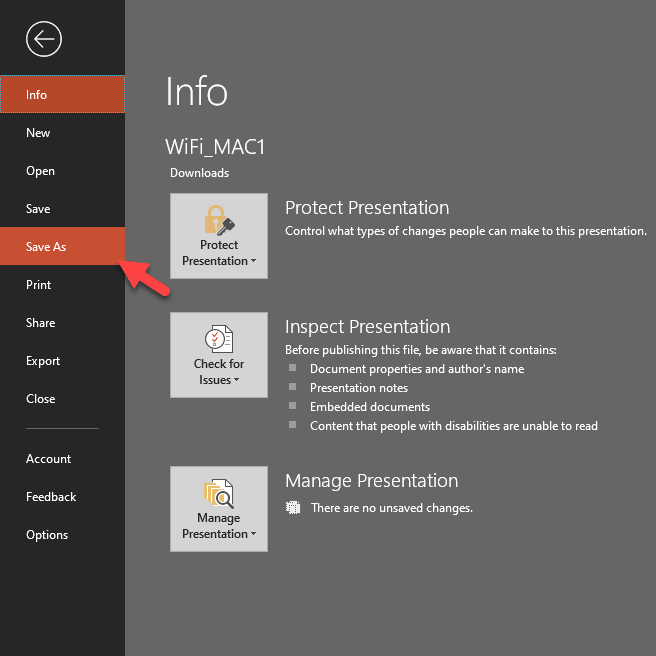
In the next setup window, below the name and file format input boxes, you will see the option to add More options.
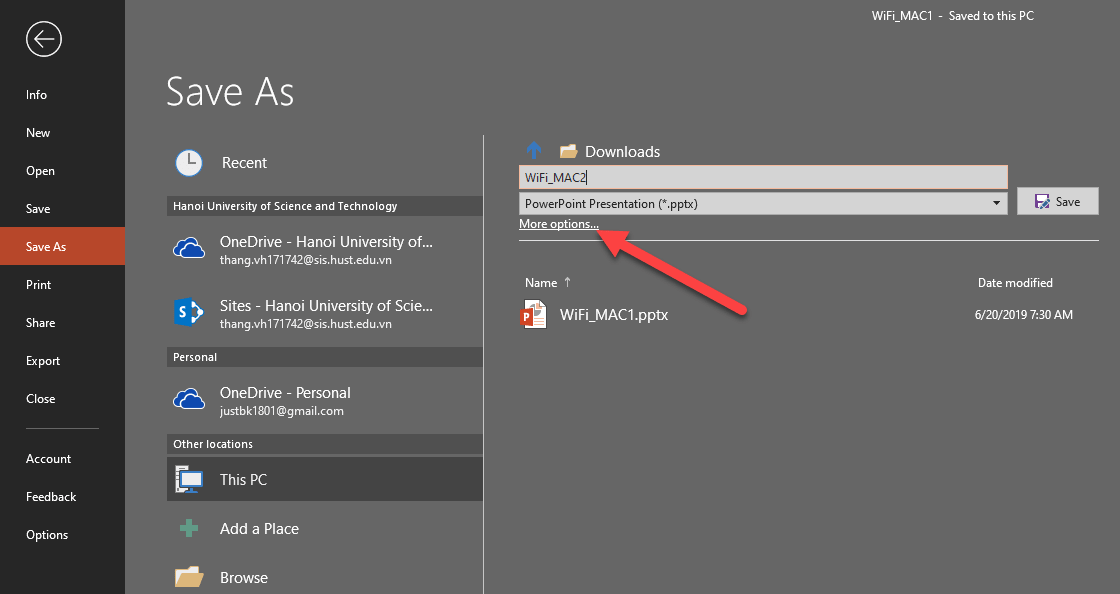
Here you select the Tool and at the bottom of the drop-down list is the Compress Pictures option.
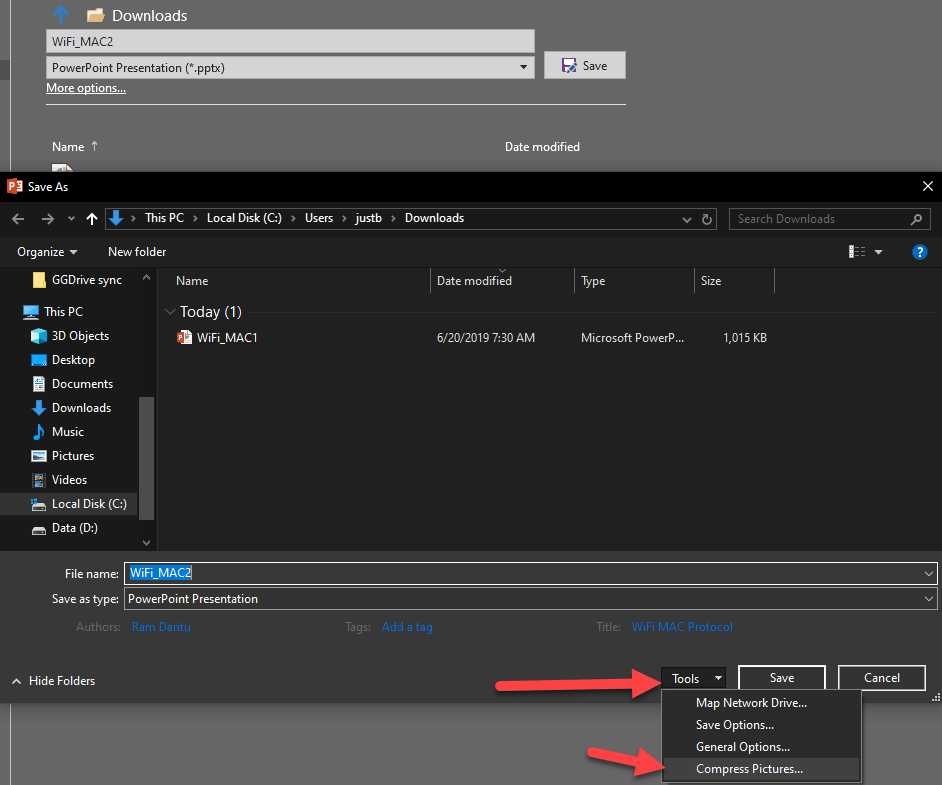
In the compressed image quality settings dialog, there are a variety of options from highest for sharpest to minimal resolutions to save space when sharing.
Here I choose the Web with captions as good for presentation on Website or projector .
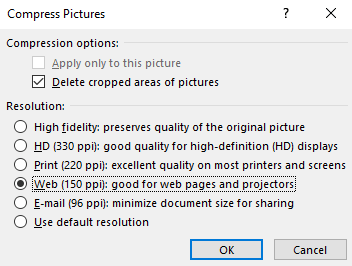
And here are the results, the compressed image file (3) compared to the original file (2) has reduced a bit of space. Of course, the larger your original file and the more images it contains, the better results can be reduced by many megabytes of file size.

4. Turn off the AutoRecover feature and restrict the use of fonts embedded in PowerPoint files if not needed
In PowerPoint, the AutoRecover feature is actually quite important as it helps you recover files that were unfinished in the previous session and lost due to factors such as sudden power outages and unsaved files.
During the working process this feature will automatically save some information to the file and increase its capacity. Only turn off this feature when you really feel it unnecessary, and I do not encourage you to turn it off.
Besides AutoRecover, another PowerPoint feature that can also significantly increase presentation size is Embed fonts in the file.
In some special cases, this option helps to minimize annoying errors when displaying a presentation on the reader due to a missing device or font error.
However in most cases and if you don't have very high standards, disabling this feature will help reduce many MB of file size.
Implementation: To turn off the two above features, you just need to access the menu File => select Options => select Save and Uncheck these options.
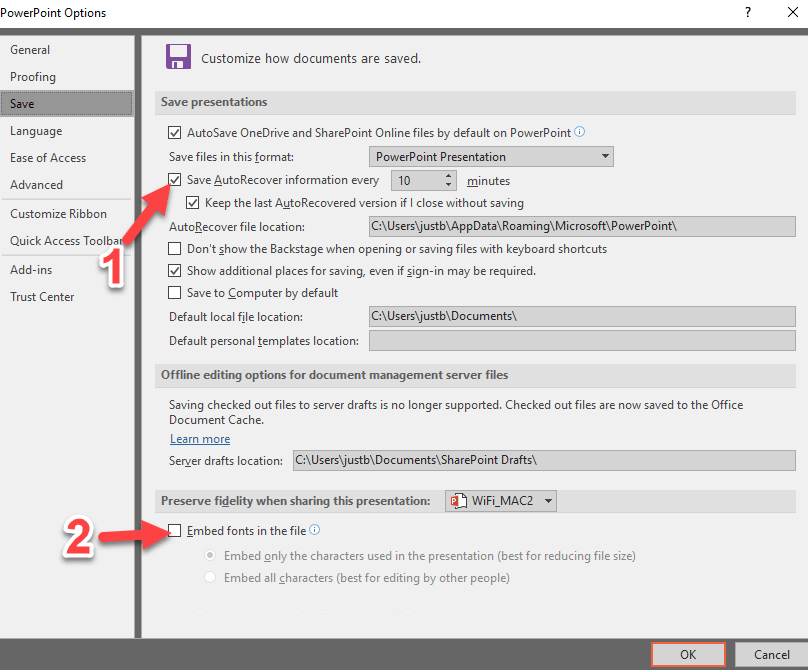
5. Some other methods to reduce the size of PowerPoint files
- Turn all slide content into a new slide show when finished. The reason is that during editing and editing, all of your operations are saved in the background and when packaging the file may be a part of that unnecessary information will be saved with increasing size.
- Remove attached personal information
- Extract the * .pptx file and repack it with specialized software: the * .pptx file format is actually a compressed file, which means we can use file compressors like 7- Zip, WinRAR unzip * .pptx file into component files and then re-compress, change archive extension to * .pptx. Due to the good file compression of these tools, your file size can be greatly reduced.
6. Conclusion
So I have finished introducing to you a few small tips to help reduce the PowerPoint file size effectively without any 3rd party software interfering.
Wish you all the best!
You should read it
- How to Reduce Powerpoint File Size
- 10 awesome PowerPoint templates make the presentation 'shine'
- Summary of useful shortcuts in PowerPoint
- How to set a password for PowerPoint files to protect data
- 50 alternative slideshow applications for PowerPoint
- Instructions to resize Slide pages in PowerPoint
- How to compress images in PowerPoint
- How to create a PowerPoint file password
May be interested
- Top 10 lightest PDF readers 2021
 pdf is the most popular document file format today, so there is no shortage of pdf readers on your computer. this article will introduce you to the fastest and lightest pdf readers.
pdf is the most popular document file format today, so there is no shortage of pdf readers on your computer. this article will introduce you to the fastest and lightest pdf readers. - How to turn off Microsoft 365 auto-renewal
 by default, office 365 will let your account renew automatically. however, this inadvertently causes you to be charged account maintenance fee even though there is no need to use it anymore.
by default, office 365 will let your account renew automatically. however, this inadvertently causes you to be charged account maintenance fee even though there is no need to use it anymore. - How to set a password for PowerPoint files to protect data
 how to set a password for powerpoint files and how to set read-only mode for powerpoint files? instructions to secure safe powerpoint file content
how to set a password for powerpoint files and how to set read-only mode for powerpoint files? instructions to secure safe powerpoint file content - Summary of keyboard shortcuts in Word you should know if you want to be better
 full sharing keyboard shortcuts in word help you compose documents faster. the most important and necessary keyboard shortcuts in ms word
full sharing keyboard shortcuts in word help you compose documents faster. the most important and necessary keyboard shortcuts in ms word - Top 5 most professional PDF editing software 2020
 editing pdf files is an extremely popular job when in office work, if you use good pdf editing software, you will improve your work efficiency. this article will introduce to you the best pdf editing software available, that is pdf-xchange editor, pdfelement, nitro pro, foxit phantom, adobe acrobat
editing pdf files is an extremely popular job when in office work, if you use good pdf editing software, you will improve your work efficiency. this article will introduce to you the best pdf editing software available, that is pdf-xchange editor, pdfelement, nitro pro, foxit phantom, adobe acrobat - how to make Proposal in PowerPoint
 todaytipsmake will guide you to a few powerpoint tips for making proposal. hope to help better powerpoint design. from layout, images, colors, to icons, to presentation of content.
todaytipsmake will guide you to a few powerpoint tips for making proposal. hope to help better powerpoint design. from layout, images, colors, to icons, to presentation of content.
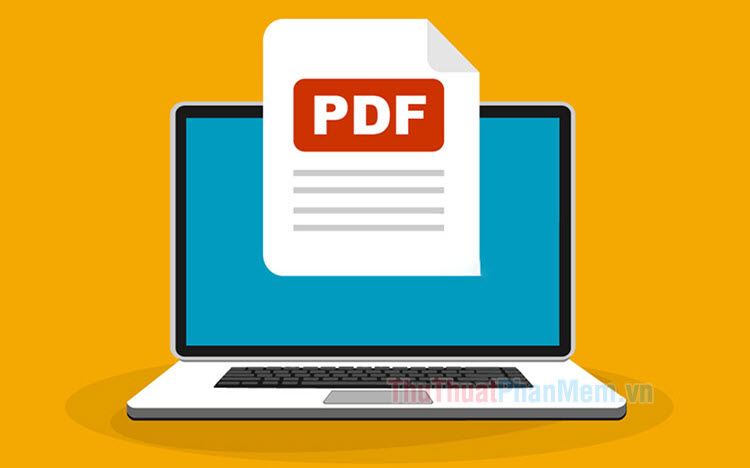





 How to reduce the size of PDF files effectively
How to reduce the size of PDF files effectively Tips to reduce the size of PowerPoint files should be known
Tips to reduce the size of PowerPoint files should be known How to reduce the size of PowerPoint files effectively
How to reduce the size of PowerPoint files effectively Compress PDF files, reduce PDF size extremely quickly
Compress PDF files, reduce PDF size extremely quickly 3 How to compress images, reduce image size effectively
3 How to compress images, reduce image size effectively